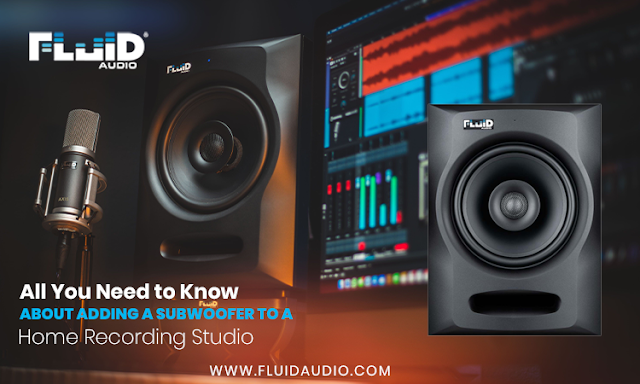All You Need to Know About Adding a Subwoofer to a Home Recording Studio
Subwoofers can add another dimension to the sound of a home recording studio. It can have many benefits, but only if the setup is done carefully, and basic acoustic rules are followed. A studio subwoofer extends the range of the full-range L/R “mains” of your system and helps to reveal the ultra-low frequencies that smaller full-range monitors cannot reproduce. Due to this, they are great for audio mixing and post-production video work in studios. However, without proper calibration, a subwoofer can actually detract from the system's accuracy. Excessive low-end frequency or low-frequency that is out of phase with the full-range speakers will create cancellation in the response, actually taking bass away instead of adding it. Of course, this distorts the natural sound you’re reproducing and leads to audible errors in recording, mixing, or mastering.
As per industry experts, it is better to select a subwoofer that is built to match the studio monitor, such as a coaxial studio monitor and studio subwoofer from prominent audio manufacturer Fluid Audio. A matching subwoofer and studio monitor complement each other and ensure the smooth functioning of the entire setup. However, if a dedicated subwoofer is not available for the monitor, selecting a close match from the same brand may fulfill the purpose. Basic knowledge about different types of subwoofers and their functions helps you make an informed decision when purchasing a subwoofer for a home studio.
Here are some specifications to consider before buying a subwoofer:
Size: The larger the subwoofer’s woofer size, generally the lower in frequency it will go, and the more output it will have. Depending on the size of your home recording studio, an 8”, 10 “or 12” subwoofer would be sufficient.
Frequency: Subwoofers are known for their low-end response. When looking for a subwoofer, finding one that performs from 20 to 120 Hz is best as lower Hz equals more bass. It should also have a frequency roll-off switch somewhere around 50Hz to 200Hz, to allow you to properly blend your sub to your full-range speakers.
Crossover: One of the main purposes of the subwoofer is to take over the burden of producing the low frequency so your mains don’t have to work so hard (so main speakers can work more efficiently). This reduces distortion and helps the user hear vocals and instruments more clearly. Therefore to maximize sound quality, it is necessary to check the crossover frequency recommendations provided with the subwoofer.
Power rating: Represented in Watts, the power rating of a subwoofer shows how loud it can go (how much output it will have). The size of the home studio determines how powerful a subwoofer is required for best results.
The addition to the power benefits, a subwoofer enhances the experience in a home recording studio. Selecting the right subwoofer can add depth, and impact to the reproduced sound. Subwoofers reveal the various layers of sound and add a whole new level of clarity and fullness to sound.



Comments
Post a Comment